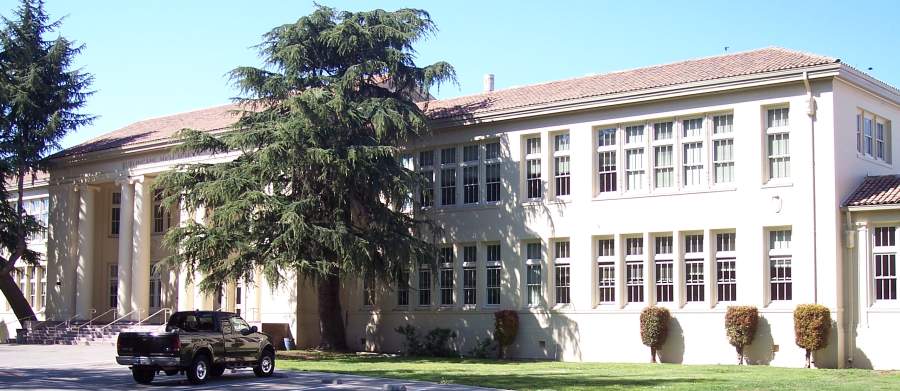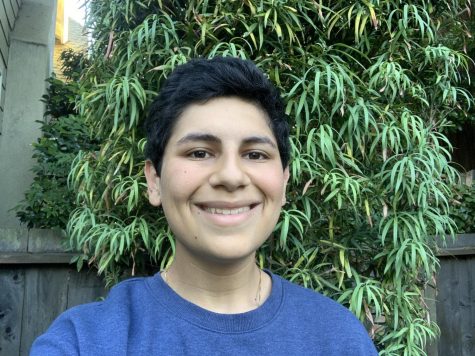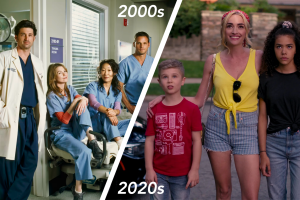Burlingame’s professional development focuses on student equity following grand jury
Photo courtesy of Greg Ciro Tornincasa
Trees line Burlingame’s main entrance on Mar. 12, 2021. On Tuesday, graffiti was discovered in the C-Building boys’ bathroom.
March 12, 2021
In October of 2020, the San Mateo County Civil Grand Jury published an in-depth report titled “Hate @ Schools — Opportunities Lost,” which argued that Burlingame did not sufficiently combat hate speech at the campus. The document highlighted hateful events that have occurred at Burlingame over the last three years; including a racist chant made by Burlingame students at a basketball game, a Jewish student’s locker being tagged with a swastika and the hateful graffiti spray painted on school walls.
Since the release of the report, the Burlingame professional development team, headed by assistant principal Michele Fichera and English teacher and professional development coordinator Amy Farley, has made a push to train teachers and staff on how to respond to future hateful incidents and how to educate their students on combating bigotry themselves.
“When there are incidents of [discriminatory] language or acts taking place right here… how do we as a school respond?” Fichera said. “That is one of the facets of professional development and one of the things that we’ve spent some time thinking about — and we’ll continue and continue and continue because you have to do it, ongoing.”
One assignment that Fichera and Farley have given to the teachers is reading and discussing the book, “Culturally Responsive Teaching and The Brain: Promoting Authentic Engagement and Rigor Among Culturally and Linguistically Diverse Students” by Zarreta Hammond, which details how educators can appropriately respond to hate on campus. Teachers have been instructed to participate in discussion threads on Canvas to discuss the contents of the book with one another, reading the book in small increments.
“[Ms. Farley and I] took the staff and broke into small groups and we designed a lesson… for teachers to go back into the reading, think about how it applies to themselves and their curriculum and instruction and talk with one another,” Fichera said.
Beyond this, the leadership class has formed a Diversity and Equity commission, which collects information about students’ perceptions of diversity within the school and their feelings of inclusion which they share with Burlingame administrators.
“Teachers are always thinking about how to improve,” Fichera said. “What readings like this do, is it helps deepen your lens to understanding kids, [and] deepens your lens to understanding your craft so that [teachers] can continuously serve students well.”
Fichera noted that the book assignment is just one segment of a larger agenda to teach educators about tackling hate speech on campus.
The school’s action plan is created in response to critiques of the school made by the Western Association of Schools and Colleges (WASC). Assistant principal Joshua Knudson has been working with the WASC on completing requirements that the school must meet, such as evaluating teachers’ performances and ensuring the school is an effective learning environment. The WASC identified areas of critical need three years ago, and checked up on the school on Feb. 24, to follow up on how they have improved these areas. Following the WASC report, Burlingame administrators created an in-depth action plan to improve campus culture and create a safe learning environment for all students, which includes combating bigotry at Burlingame, despite that being a critique made by the WASC.
“From the action plan that we have, we did a couple pretty big pivots,” Knudson said. “And one of them was… adding a bunch of goals and action steps that deal with inclusion and equality.”
Knudson also noted that the vandalism on campus in September of 2019 was the impetus for the staff to begin focusing on inclusivity and anti-hate plans for them and the school.
“The action plan is tied to the Grand Jury report in the sense that it addresses a lot of those missed opportunities that the Grand Jury report points out,” Knudson said. “Our desire is to make sure that every student is equal, every student feels welcome, every family feels like they can engage and that everybody has the same chance of success.”










































